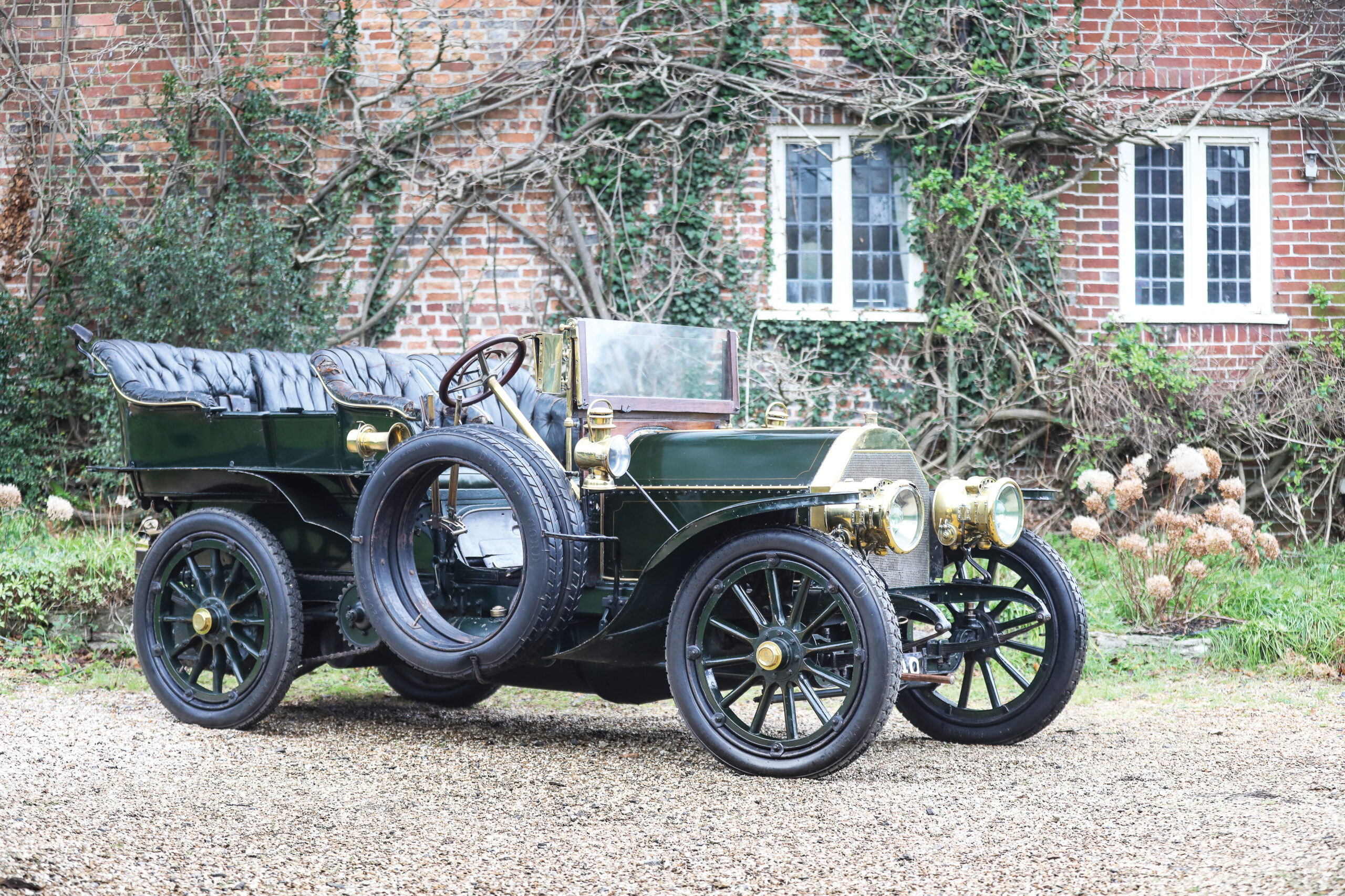Chassis Number: 2924
In 1890, after parting ways with Deutz AG, Gottlieb Daimler and Wilhelm Maybach established Daimler Motoren Gesellschaft (DMG) in Cannstatt, Germany. DMG revolutionized the design and manufacture of internal combustion engines, inventing the world’s first four-stroke petrol engine and float-feed carburetor.
Despite groundbreaking developments, Daimler and Maybach initially attracted little interest for their products in Germany. Paris was the cradle of the burgeoning automotive industry. DMG successfully sold manufacturing rights for its V-twin engine to the leading French manufacturers — Panhard et Levassor and Peugeot.
In 1898, Emil Jellinek, Viennese-born Consul General for Austria-Hungary, established himself as the official agent for DMG in Nice, France, selling new Phoenix Daimler motor cars to wealthy residents of the French Riviera — at the time, the world’s second-largest market after Paris for automobiles.
While they were large, powerful and relatively fast, the Phoenix Daimlers were ungainly in appearance and challenging to operate. Frustrated by their aesthetic and mechanical compromises, Jellinek demanded that DMG develop an all-new motorcar and agreed to buy the first 36 examples built. He named these new automobiles after his young daughter — Mercédès — believing it would hold greater international appeal. In France, memories of the Franco-Prussian War had left lingering resentment toward the Germans.
Unveiled in December 1900, the striking new DMG-built Mercedes 35HP, designed by Wilhelm Maybach, is widely regarded as the first truly modern motorcar. It boasted several revolutionary features: a low, pressed-steel chassis, honeycomb radiator, low-tension ignition, scroll clutch, water-cooled drum brakes and an H-pattern, 4-speed gearbox with dual-chain drive.
The following year, DMG returned to Nice with the improved Mercedes-Simplex 40HP. Mercedes quickly became the car du jour among well-heeled motoring enthusiasts in France, England, and the U.S., building the marque’s international reputation.
Developed throughout 1902 and debuted in 1903, the Mercedes-Simplex 60HP offered a new standard of performance, thanks to its high-output, 9.25-liter 4-cylinder engine. Its overhead intake valves yielded the greatest volumetric efficiency of any engine of its day. Capable of 80 mph and easy to handle, with its relatively long wheelbase and low center of gravity, the new Mercedes-Simplex 60HP was the first true dual-purpose automobile — a powerful, reliable tourer that could also win races after removing its rear seats and fenders and fitting a lightweight 2-seat body.
Between 1903 to 1905, the Mercedes-Simplex 60HP became the finest, fastest production car in the world, winning countless speed trials, hillclimbs and circuit races. The DMG Works in Cannstatt built 102 Mercedes-Simplex 60HP cars between late 1902 and 1905. Through Emil Jellinek in Nice and Charles Lehmann’s C.L. Charley dealership in Paris, these magnificent automobiles were sold to an elite clientele that included American millionaires William K. Vanderbilt and Clarence Gray Dinsmore, as well as aristocratic European enthusiasts such as Baron de Caters, Baron Henri de Rothschild and Count Louis Zborowski.

